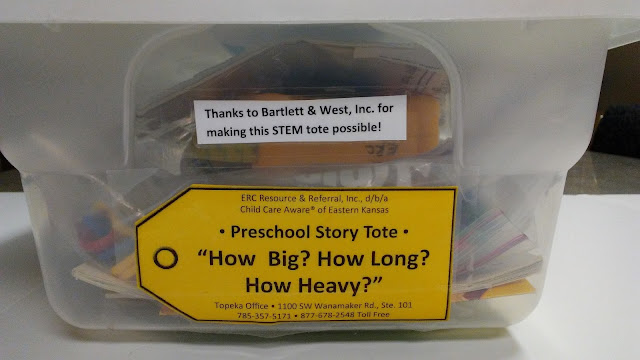How Big, How Long, How
Heavy?
An integrated STEM (Science, Technology, Engineering, Math)
curriculum often revolves around scientific inquiry. This method encourages children to ask
questions, conduct explorations, and form inferences in much the same manner as
scientists. Teachers support scientific
inquiry by providing interesting curricular materials that challenge children
to explore and learn while building on their previous knowledge and
understanding.
The questions teachers pose and the conversations they have
with children as they interact with materials can increase their thinking
skills and provoke deeper investigations.
Let’s look at the seven components of scientific inquiry.
Predicting:
Forming an
idea or expectation based on previous experiences that guides scientific
investigation
Observing:
Carefully
examining the characteristics of an object, either in its natural environment
or in an experimental setting.
Experimenting:
Creating a
situation to investigate a prediction or manipulate an object to gain
knowledge.
Comparing:
Forming
relationships through observation or experimentation with objects
Measuring:
Formulating
or using a method to compare or quantify particular attributes of objects, such
as length, weight, distance, and speed.
Inferring:
Forming an
assumption based on repeated observations or experimentation
Communicating:
Sharing
knowledge gained through inquiry by talking, writing, drawing, or reenacting a
situation
Children can
engage in scientific inquiry through exploring materials in our library lending
totes, such as the STEM tote, “How Big? How Long? How Heavy?” Here are some of the materials included in
the tote:
The book,
The Best Bug Parade,” by Stuart J. Murphy, has children comparing big, bigger, biggest with small,
smaller, smallest – and long longer, longest with short, shorter,
shortest. It is a fun book for
introducing and using language that describes, measures and compares different
sizes.
Another
activity in the tote is the book, Inch by
Inch by Leo Lionni about a small green inchworm who is proud of his skill at measuring anything—a
robin's tail, a flamingo's neck, a toucan's beak. Children can then use the one inch chains
that come in the kit to measure items in the book and in the classroom. Here is a lesson plan for this book and
materials.
The book, “Just a Little Bit” by Ann Tompert is about an elephant and a mouse that need help from their animal friends
in order to balance the seesaw so they can play.
The kit comes with a simple to use balance for children to
use with the accompanying pucks, or even add animals or other objects from the
classroom. The predicting, observing,
experimenting, measuring and evaluating all happen naturally as the children
work to get the sides to balance.
The
tote also comes with the book measurement mysteries and physical activity cards
to incorporate movement with learning about and comparing sizes.
Here
is a lesson plan that goes with this activity.
There
are so many creative ways to introduce children to measuring and comparing
concepts! Check out this measuring
activity from Going Back to Kinder that uses yarn and pictures of your
students.
Munchkins and Moms made a measuring center in the block play area – what a great idea!
And
if you are wondering what to do with all those bows you collect after the
holidays, check out this fun comparison game at Learning 4 Kids.
What are
your favorite activities you use to support scientific inquiry?












Comments
Post a Comment